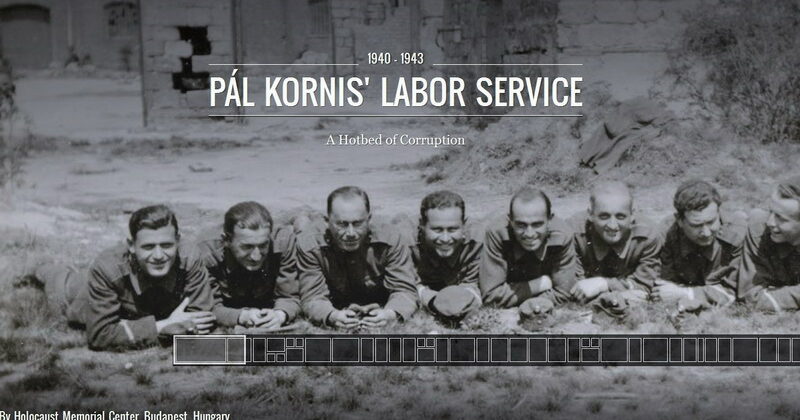The Google Cultural Institute is well known among the Hungarian museologists and connoisseurs of art and culture. As of mid-March, the first Hungarian exhibition is available on the platform’s Historic Moments collection – posted by the Holocaust Memorial Center in Budapest. The Pál Kornis’ Labor Service A Hotbed of Corruption exhibition introduces the forced labor service through the personal story of a conscript of this controversial unarmed form of military service.
The main phases of the story were provided, thanks to the opportunities offered by the Google platform, with sufficient background info. Hence the foreign visitors without prior knowledge of the details of the Hungarian history of the period are also able to understand the developments. The protagonist, Pál Kornis was lucky enough to experience the “easier” form of labor service, when the malice of the guards was aimed at looting and pillaging and not at physical annihilation of the servicemen.
Google Cultural Institute cooperates with hundreds of cultural institutions, museums and archives from more than forty countries. Pieces of art and culture are divided into three large platforms; the Art Project, the World Wonder Project and the Historic Moments. More than six million items are posted, available to the public just a few clicks away.
At the moment 61 collections from all over the world cooperate within the Historic Moments project. Apart of the Holocaust Memorial Center in Budapest, well known institutions, like the Yad Vashem, the U.S Holocaust Memorial Museum, the Anne Frank House and the Auschwitz-Birkenau Museum contribute to a better understanding of the drama that claimed lives of millions of innocent victims during WWII. As the collection of our institution is based on donation of items by individuals, it can illustrate the events through personal stories and family histories.
